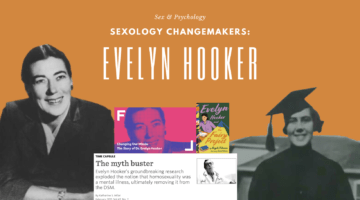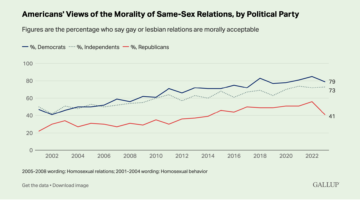Does “Gaydar” Really Exist? Here’s What the Science Says
September 16, 2016 by Justin Lehmiller
The intuitive ability to determine whether or not someone is gay is known colloquially as “gaydar.” When people use their gaydar, they attempt to make inferences about someone else’s sexual interests based upon minimal information, such as the way a person dresses, walks, or talks. Gaydar has been the subject of a fair amount of controversy as of late, with some scientists arguing that it’s real and others claiming that it’s a myth. So what’s the deal—is there something to this or not?
Social psychologist Nicholas Rule pulled together all of the available research on this topic in a new paper published in the Archives of Sexual Behavior (this paper is part of a forthcoming special issue devoted to “the puzzle of sexual orientation”—for coverage of other articles in this issue, see here and here). Here are some of the key highlights from Rule’s review of the literature:
· Most scientific studies of gaydar have found support for it–and these studies have included very different kinds of cues. For instance, people appear able to detect sexual orientation while listening to short audio recordings, as well as while watching silent videos. Other research has found that people can detect sexual orientation from still images of faces flashed on a screen for just a fraction of a second. Thus, it seems that gaydar picks up on everything from looks to movements to speech patterns.
· Sexual orientation inferences occur quickly and automatically. In fact, when people are asked to think carefully before making their determinations, gaydar actually becomes less accurate. In other words, the more you think about it, the worse your gaydar tends to be.
· We aren’t necessarily aware of all the factors that influence our gaydar judgments. Studies have found that when people are asked why they made the specific sexual orientation inferences that they did, they often lack insight. This is especially true when people have to make sexuality judgments in response to the most minimal of cues (e.g., a cropped image of a face that shows only the eyes, nose, and mouth).
· Some people appear to have better gaydar than others. For example, anti-gay people tend to perform worse in gaydar studies, whereas sexual minorities and other people who have more familiarity with gays and lesbians tend to perform better.
· One particularly fascinating study found that when women were ovulating, their gaydar improved—in other words, when women are at peak fertility, their ability to discern gay men from straight men is enhanced.
· Most studies of gaydar simply ask people to make gay/straight judgments—but, of course, there are far more than two sexualities in the real world. In gaydar studies where bisexuals were included, people could not accurately distinguish them as a separate group. Interestingly, when people were given the opportunity to guess others’ sexuality on a continuum (think something along the lines of the Kinsey Scale), gay and bisexual persons tended to be given similar ratings, which suggests that gaydar only distinguishes heterosexual from non-heterosexual and doesn’t necessarily assist in more complex sexuality judgments.
· Overall, gaydar determinations are better than chance, but they’re far from perfect. Most gaydar studies are set up such that participants would be correct 50% of the time simply through chance guessing–however, participants typically do quite a bit better than this, with the average accuracy rates being in the range of 62-64%. It’s possible that accuracy rates might be even higher in the real world, though, where people are typically presented with more cues and information than they are in lab studies.
The bottom line: The accumulated research to date suggests that there is something to the idea of gaydar and that people can intuit others’ sexuality at levels greater than chance from a variety of cues. However, gaydar is clearly an imperfect tool and it doesn’t necessarily appear to be sensitive to the wide spectrum of sexualities that exist.
Want to learn more about Sex and Psychology? Click here for more from the blog or here to listen to the podcast. Follow Sex and Psychology on Facebook, Twitter (@JustinLehmiller), or Reddit to receive updates. You can also follow Dr. Lehmiller on YouTube and Instagram.
To learn more about this research, see: Rule, N. O. (2016). Perceptions of sexual orientation from minimal cues. Archives of Sexual Behavior.
Image Source: 123RF/dvarg
You Might Also Like:

Dr. Justin Lehmiller
Founder & Owner of Sex and PsychologyDr. Justin Lehmiller is a social psychologist and Research Fellow at The Kinsey Institute. He runs the Sex and Psychology blog and podcast and is author of the popular book Tell Me What You Want. Dr. Lehmiller is an award-winning educator, and a prolific researcher who has published more than 50 academic works.
Read full bio >


